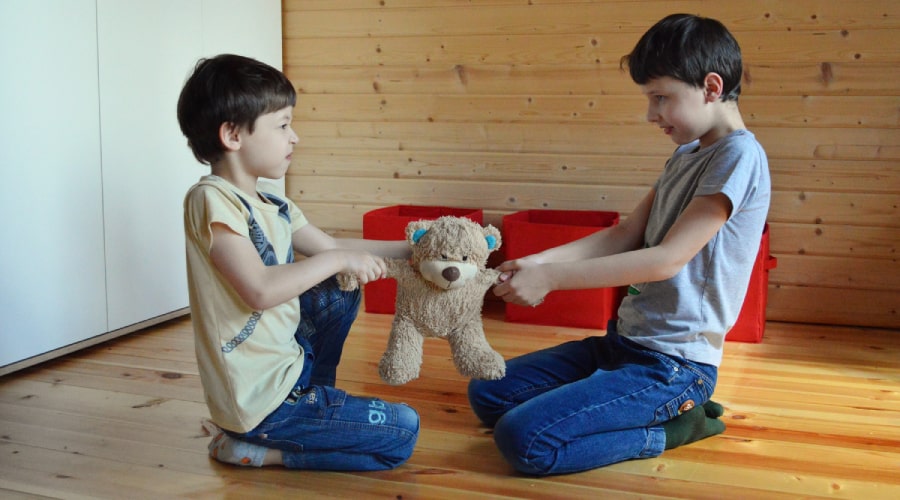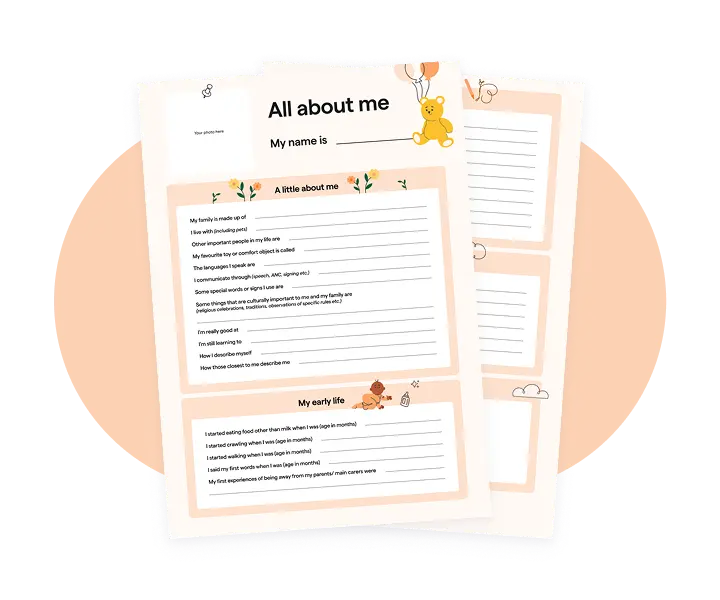settings
children
With Famly since
Imagine someone asked you to lift a Volkswagen above your head, and said they’d give you $1,000 if you did.
Odds are, you wouldn’t be able to do it. Not because you don’t want the money, but because you haven’t built up the strength to do something like that.
The point is, incentives aren’t worth much if we’re missing the right skills for the task at hand. And in early education, that’s worth keeping in mind as we think about how we teach behaviour to young children.
You’ve probably heard about behaviour charts or recognition boards, if you haven’t used them yourself. There are a lot of variations on these, but at their core, they’re charts you hang in your classroom to promote certain behaviours, and incentivise children into demonstrating them.
But Jessica Minahan, a licensed behaviour analyst, special educator and author, believes we can make these tools much more effective — and less stressful — for children. As she explains, that starts with looking at how we build up self-regulation skills.
“What's missing for me is the awareness that children aren’t misbehaving on purpose. They’re doing it because of underdeveloped skills, not because they’re lacking an incentive,” she says.
In this piece, we’ll take a critical look at behaviour charts and recognition boards, and how we can tweak our approaches to self-regulation and behaviour management in early education.
And to start that off, we’ve got to go back to the very building blocks of behaviour.

Behaviour charts, recognition boards ... what’s the difference?
Behaviour charts and recognition boards aren’t quite the same thing, but they’re related. They’re both tools that try to encourage certain behaviour by using incentives: If you’ve been a calm, quiet listener all week, you might get a sticker next to your name, or you might just get recognition from your name going up on the board.
In an early education environment, you might see a behaviour chart used to promote things like:
- Keeping our hands to ourselves
- Using kind words
- Raising our hands and taking turns
- Cleaning up after oneself
- Being good listeners
With behaviour charts, children can get penalized for not meeting those behaviour goals. You might have a sticker or a point removed from your name — or if you’re in the ‘green zone’ for good behaviour, there’s a risk of getting knocked down to yellow.
While behaviour charts have gotten their fair share of critique from educators, recognition boards propose a more positive alternative: They use positive reinforcement only. Children can’t get ‘demoted’ or penalised, only celebrated when they show the desired behaviour.
But in the bigger picture of behaviour guidance, recognition boards still fall short. The core problem, Jessica explains, is that these systems don’t do enough to build the fundamental emotional skills that children need to control their own behaviour.
“When we don’t teach self-regulating skills, or if we don’t look for the reasons behind children’s behaviour, it’s easier to slip into this thinking that children just aren’t motivated to behave, and that an incentive will fix things. The reality is much more complex than that,” she says.
The big ideas

Why behaviour charts fall short
Children’s behaviour is a deeply complex, personal thing. If we’re trying to capture that behaviour in a chart, or grouping a whole class together, we’re at risk of oversimplifying things.
“Especially at young ages, children just develop so differently. We see this with motor skills, language skills and academic skills too,” Jessica says. “There’s a lot of variability in children’s development at this age, so I don’t think it makes sense to compare them to each other with a chart.”
There are plenty of reasons why young children might have trouble following along with a behaviour chart or a recognition board. Let’s consider a few factors:
- A child might be dealing with ADHD or ADD, making it harder for them to be focused listeners
- Children with autism might find it harder to read the social cues that often shape our idea of good behaviour
- The idea of tracking behaviour with a chart might simply be too abstract for young children, so it doesn’t seem relevant to their real-life actions
But Jessica is careful to point out that you don’t need to have any particular diagnosis or learning disability to have trouble connecting with a behaviour chart or a recognition board. In early education, there are plenty of reasons why these incentive-based tools don’t work.
“With behaviour, one size just does not fit all, so we really need to dig into the roots of children’s behaviour. This starts with avoiding making assumptions that children are wilfully misbehaving, and instead looking at what skills they might still be missing,” she says.

Teaching self-regulation needs to come first
If we want children to learn good behaviour, we need to give them the right tools for the job — which means putting more focus on self-regulation skills.
Self-regulation is the process by which children learn to get a handle on their own emotions. In early childhood, that means learning basic skills like:
• Finding ways to calm ourselves when we’re upset
• Dealing with frustrations without having a tantrum
• Adjusting to unexpected changes in our routine or surroundings
In the scope of this short article, we don’t have time to explore all the different ways to explore and teach self-regulation to young children. But as they relate to behaviour charts and recognition boards, it’s important to know that self-regulation is the bridge between talking about good behaviour, and actually being able to practise it.
If we dive right into behaviour charts without first building up those self-regulation skills, Jessica says that we risk creating a new source of anxiety for children.
“Suppose we’re teaching children to keep their hands to themselves. Have we taught the child the self-regulation strategies they need to be able to do that?” she asks. “If you don’t teach the skills to children when they’re struggling, and then you show them a chart that shows that they’re behind the other children, it’s got a bad effect on their self-esteem.”
How behaviour charts and recognition boards can worsen anxiety
In the UK, the National Health Service estimates that as many as 5 percent of children under age 12 are dealing with anxiety disorders. In the US, around 7 percent of children have an anxiety diagnosis, and that number’s on the rise.
And while we don’t have any studies on it yet, we can assume that the pandemic has only made everybody’s anxiety worse.
That’s all the more reason for being careful with behaviour charts and recognition boards, and the way they can exacerbate that anxiety.
Even when we aim for positive reinforcement, like with recognition boards, children can still feel left out or ashamed for not meeting a behaviour goal. It’s hard for them to recognise that they’re missing some self-regulation skills, so they process that shortcoming as an internal failure.
As Jessica explains, this can worsen children’s anxiety, which then leads to a difficult behavioural spiral:
“When our anxiety goes up, our self-regulation goes down. It’s harder to think of those de-stressing techniques, and it also becomes easier to think negatively about ourselves. Over time, children can start to think they’re just not able to behave well, and that it’s their own fault,” she says.
That’s why especially now, we’ve got to put extra focus toward how we help the little ones build up their emotional and self-regulation skills.

How we can build better behaviour in the early years
As Jessica points out, you don’t necessarily have to toss your behaviour chart out the window. Rather, it’s about building up our knowledge and skills, to fill in the gaps where a chart alone might fall short.
If you’re looking for a better route toward behaviour guidance in your own early education environment, there’s plenty of resources out there for you. One place to start is looking at Jessica Minahan’s own blog posts and publications — she’s written a lot about behaviour management strategies, and how they work in real life in your classroom.
Jessica also recommends Massachusetts General Hospital’s Think:Kids initiative, which has plenty of resources on how we can take a more empathetic, constructive approach toward helping children through behavioural issues.
And down below, we’ve got some tips on how you can get better behaviour in your own classroom:
• Think about behaviour in terms of goals, not rules. It’s more encouraging to work toward goals, and helps children understand that behaviour is a work in progress. When we use rules, we’re more inclined to police children for ‘breaching’ these rules, which isn’t always so constructive.
• Focus on self-regulation skills, not behaviours themselves. If you set out a goal, you should give children the tools they need to achieve them. Exploring behaviour goals should also mean discussing the self-regulation techniques and emotional skills that we need in order to show that behaviour.
• Take children’s names off the chart. Instead of tracking who made it and who didn’t, you can use a board to promote self-regulation skills for the whole classroom — but without the pass/fail element that can cause anxiety.
• Make a “decompression corner” in your classroom. This isn’t a time-out or a penalty. Rather, it’s a space where children can decompress and distract themselves from whatever’s frustrating them, which is a big skill for regulating our emotions.
Try learning journals for free
Add observations, and build digital learning journals to share with families instantly. All with your completely free 14-day trial.
Get started









